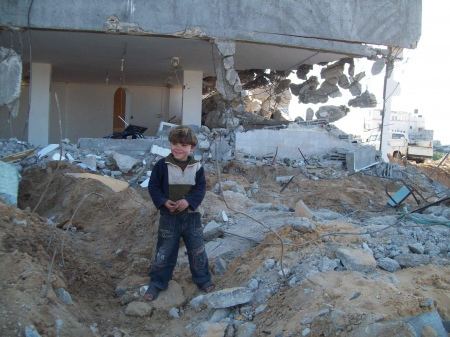Palestine grid 100/103 Name meaning "The mountaineers" | ||
 | ||
Weather 13°C, Wind NE at 10 km/h, 79% Humidity | ||
Jabalia also Jabalya (Arabic: جباليا) is a Palestinian city located 4 kilometers (2.5 mi) north of Gaza City. It is under the jurisdiction of the North Gaza Governorate, in the Gaza Strip. According to the Palestinian Central Bureau of Statistics, Jabalia had a population of 82,877 in mid‑2006. The Jabalia refugee camp is adjacent to the city to the north. The nearby town of Nazla is a part of the Jabalia municipality. The city is currently ruled by a Hamas administration.
Contents
- Map of Jabalia
- Archaeology
- History
- Ottoman period
- British Mandate era
- Post 1948
- Demographics
- Twin town
- References
Map of Jabalia
Archaeology
A large cemetery dating to the 8th century CE was found near Jabalia. The workmanship indicates that the Christian community in Gaza was still very much in existence in the early Islamic era of rule in Palestine, and capable of artistic achievements. The remains of the pavement spared by the iconoclasts show depictions of wild game, birds, and country scenes. The late dating of the mosaic pavement proves that the intervention of the iconoclasts, after 750, is later than previously thought and is associated with Abbasid conservatives.
While working on the Salah al-Din Road, laborers accidentally uncovered a monastery from the Byzantine period. The site was excavated by the Palestinian Department of Antiquities. Now the stunning Byzantine mosaics of the monastery are covered with sand to shield them from erosion caused by the direct impact of the winter rain. Byzantine ceramics have also been found.
History
Jabalia was known for its fertile soil and citrus trees. The Mamluk Governor of Gaza Sanjar al-Jawli ruled the area in the early 14th-century and endowed part of Jabalia's land to the al‑Shamah Mosque he built in Gaza. In Jabalia is the medieval Omeri Mosque. No structures from the ancient part of the mosque remain, except the portico and minaret. The rest of the mosque is of modern construction. The portico consists of three arcades supported by four stone columns. The arcades have pointed arches and the portico is covered by crossing vaults.
Ottoman period
Incorporated into the Ottoman Empire in 1517 with all of Palestine, Jabalia appeared in the 1596 tax registers as being in the Nahiya of Gaza of the Liwa of Gazza. It had a population of 331 households, all Muslim, who paid taxes on wheat, barley, vine yards and fruit trees.
In 1863, the French explorer Victor Guérin found in the mosque fragments of old constructions, and at the well some broken columns. An Ottoman village list from about 1870 found that the village had a population of 828, in a total of 254 houses, though the population count included men, only.
In the Palestine Exploration Fund's 1883 Survey of Western Palestine, Jabalia was described as being a large adobe village, with gardens and a well on the north-west. It had a mosque named Jamia Abu Berjas.
British Mandate era
In the 1922 census of Palestine conducted by the British Mandate authorities, Jabalia had a population of 1,775 inhabitants, all Muslim, increasing in the 1931 census to 2,425, still all Muslims, in 631 houses.
In 1945, Jabalia had a population of 3,520, all Muslims, with 11,497 dunams of land, according to an official land and population survey. Of this, 138 dunams were for citrus and bananas, 1,009 for plantations and irrigable land, 1,036 for cereals, while 101 dunams were built-up land.
Post 1948
In late 2006 it was the scene of a mass protest against Israeli attacks, when a large number of people formed a human shield to protect a house which was about to be demolished by Israeli forces.
Demographics
Jabalia has a higher than average rate of male pseudohermaphrodite births. A Canadian-Palestinian pediatrician and urologist named Jehad Abudaia said that consanguinity due to cousin marriages is the reason why pseudohermaphrodite births are relatively prevalent. Because Gaza has a lower standard of medical care than many places in the Western world, pseudohermaphrodite conditions often go undetected for years after the births occur.
